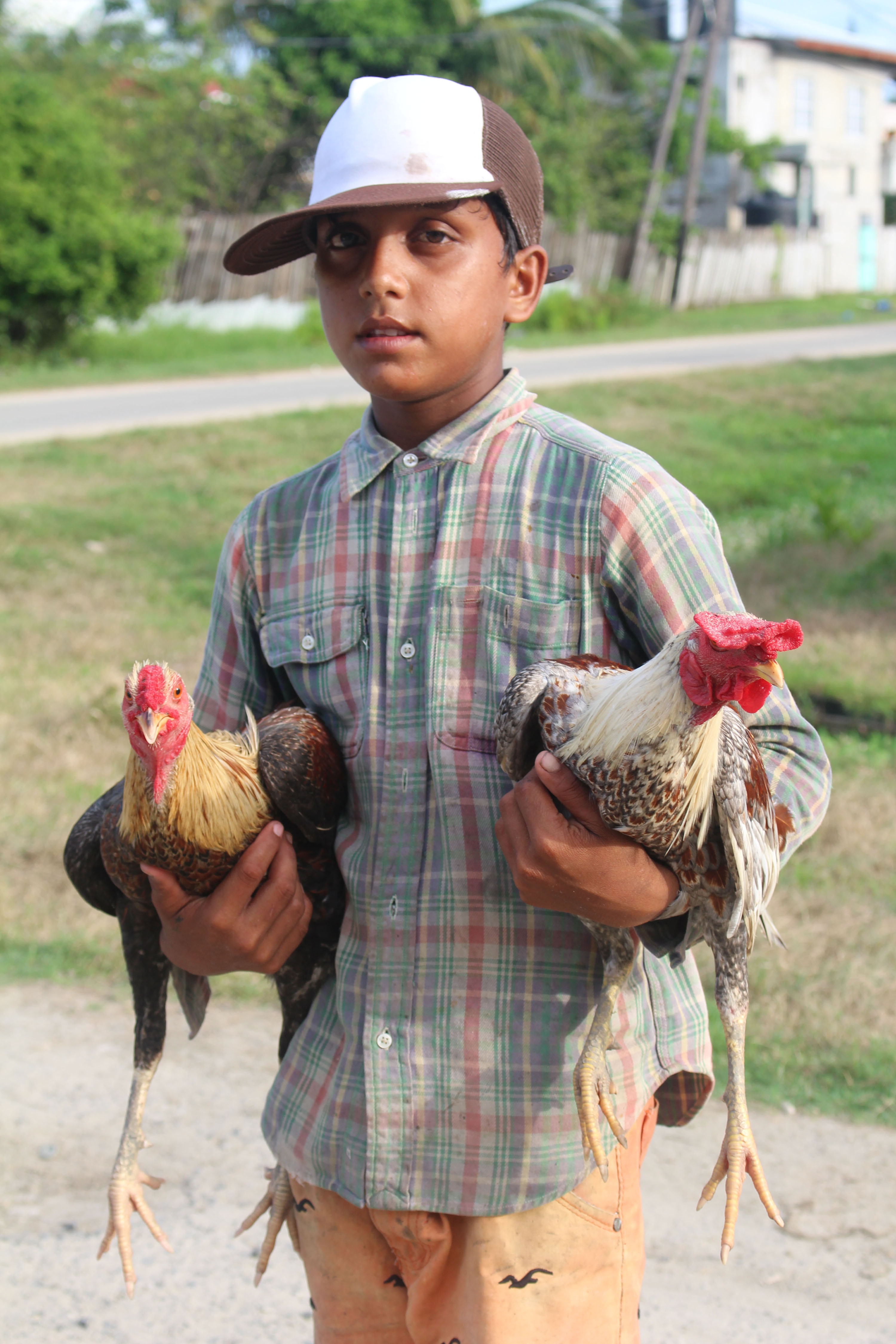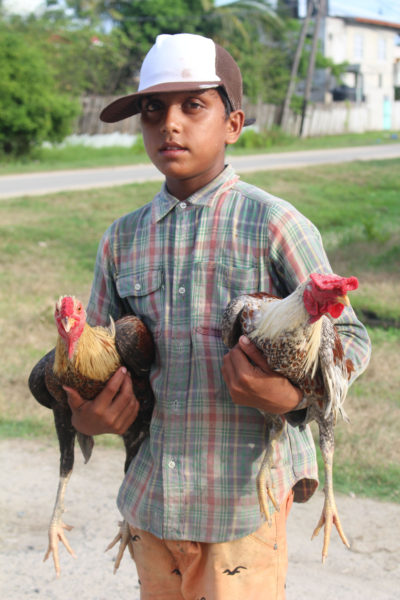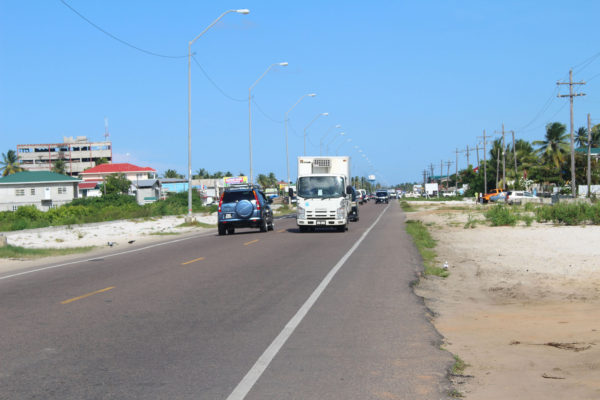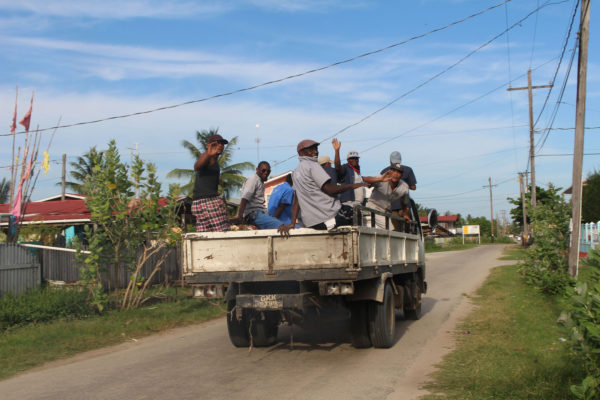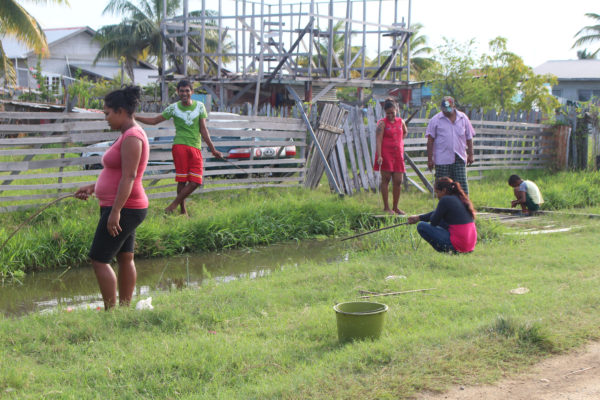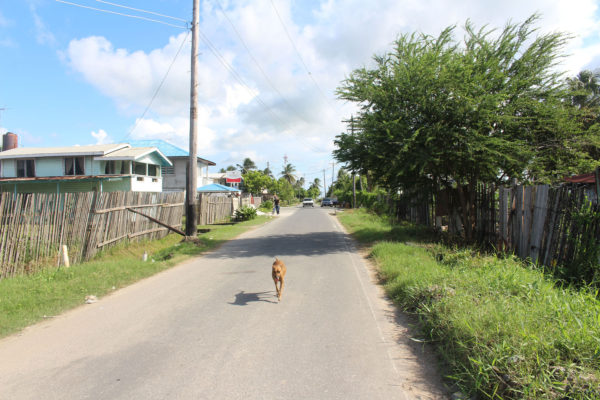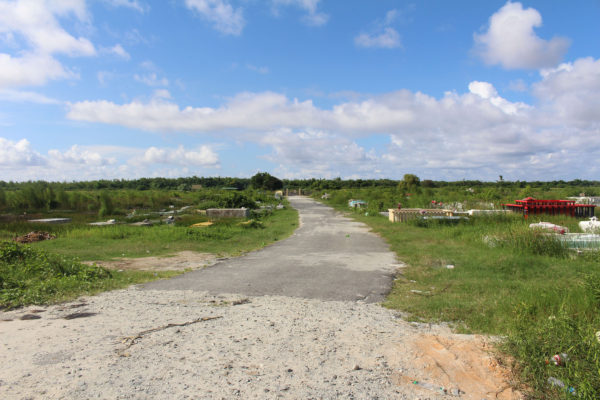Photos by Joanna Dhanraj
This village is the third of the same name that the World Beyond Georgetown has visited. Features have already been done on Good Hope, Essequibo Coast and Good Hope, East Bank Essequibo. Good Hope, East Coast Demerara is the largest of them. It began as rice fields, before it became a cow pasture then a cane field and eventually house lots were given out many years later. Today, some 10,000 people representing the country’s diverse ethnicities and religions reside here and are amply catered for by a mosque, temple and myriad churches.
The village is so vast it has three phases. Good Hope also has a huge burial ground and its crematorium within the cemetery is widely used by not only villagers, but persons from afar.
It has scores of mongooses, wily creatures that pop up and disappear in a flash – too fast for the camera, in fact. Residents described them as good-natured rodents, stating that their presence keeps snakes away.
The World Beyond Georgetown stopped outside a fence where three mongooses had disappeared to the other side and before long, Bibi Ali appeared from inside the house to open the gate. Ali moved from her village, Dochfour, also on the East Coast Demerara to live with her in-laws at Good Hope in 1980.
“When I first came here, the place was very bushy and muddy,” she said. “By the time you come downstairs was mud. When the rice fields in Good Hope started selling out my father-in-law bought a piece of land and sand-filled it. They were one of the first set of people to live here.”
By the time they moved here the railway tracks had already been removed.
“We used to get water then but was punishment. The pipe was down in a hole and the pressure was low. Sometimes the water cut off to and all,” she recalled. When that happened water to cook and wash was taken from the trench. Sometimes Ali would have to take a car three villages away to Buxton, to fill her jars and then take a car back. Her husband would be waiting outside to fetch the water in. These were the lengths she went to when she needed to get water to drink for her family.
Ali’s children attended the Lusignan Nursery and Primary schools and though the children of Good Hope today still attend Lusignan Primary, the village now has its own nursery school.
One disadvantage is that it still floods when there is rainfall. According to her, half an hour of rain is enough to flood the place. The 2005 Great Flood was the worst she said, recalling that the water had reached her hip.
“We need better drainage,” she said. Her daughter chimed in that the village has no garbage collector and most persons with vehicles take their garbage to the dumpsite behind the Lusignan Prison.
Every week, Ali takes a trip to either the Mon Repos or Lusignan market to get her vegetables. Her groceries are purchased from one of the supermarkets in the area.
Ali pointed out that the crematorium in Good Hope is perhaps its best known landmark. She added that cremations are held there on a daily basis. The late agricultural minister Satyadeow Sawh and his two siblings who were also assassinated were among the thousands to have been cremated there.
“Life here in Good Hope is much better. We get everything that is necessary. Apart from [places to worship], a school, supermarkets, cemetery, we also have taxi services, auto shops and auto spares, lemonade factory, hollow block factory, hair salons and lumber yards.”
A few yards away lives Bachan (only name) whose father was the first to live on the east railway embankment. He was born in Lusignan and moved to Good Hope in 1967. He said the village is divided into East, West, North and South and stretches from the seawall to the Lamaha Canal.
According to him, as a boy he felt that school was not for him so he joined the rest of his family toiling in the backdam. They planted cash crops and three or four times a week they would sell their produce at the Bourda and Stabroek markets. Back then, he said, the place never flooded like it does now.
While to him Good Hope is a quiet place to live and peaceful, he and his family still live in fear after being robbed by armed bandits on two occasions. Once the sun sets, he said, people are locked in their houses as thieves tend to be lurking in lonely spots to rob persons traversing the area. He usually advises persons to get whatever business they have done while it’s still daylight as it is not safe after dark.
Asked about developments he would like to see in his village, Bachan said, “I’d like to see a higher employment rate in the country. There’s a saying that says it isn’t good to pray for yourself alone. When you pray; pray for everybody else.” Across the road and through a sideline dam is the quickest route to the Good Hope Scheme, but it means dodging the flies buzzing around and about the garbage and filth covering most of the path. The stench is almost unbearable.
Past that, the scheme teems with life: neighbours chatting in a corner, children playing, a man painting his fence and chatting with his friend braced against his bicycle, a truck passing by with workers waving, a man riding his bicycle and singing a Bhajan and two men talking outside a lumber yard. Further on, there is a family fishing in a trench and little David walking with his two fighting roosters. His father “Chucky” boasts about their skills and the money that could be made when they go to the “nationals” – between $20,000 and $100,000, he said.
He then excitedly prepared the birds for “a fight-off,” covering their “spurs” as he called it so that they won’t kill each other. Once he put them down in the grass they wasted no time in attacking each other. The Red Diamond and Black Diamond, as he called the birds, pecked and kicked at each other sometimes flying over the other before crashing back down. Over and over they continued with Black Diamond taking most of the blows. In the end when the birds seemed unable to go anymore they were picked up. Both of them were bleeding but Red Diamond won the fight. A number of people had gathered to watch the fight, but they all remained mum about the rooster fighting matches, which are illegal.
A group of Hindus walked along the road singing Bhajans and collecting donations from other Hindus.
Dhanrajie Ramsaywack is a devout Hindu who has studied the religion deeply. She moved to Good Hope from Success a little over 20 years ago after been allotted a house lot. Five years after they moved, her husband passed away and she has been managing alone since. She is one of the caretakers of the Mandir and considers it a blessing to have obtained a lot close by.
There were just a few people in Good Hope when she moved here, she said, but as time went by it became less lonely. Concerning rumours of thieves, Ramsaywack said she constantly hears them, but puts her trust in God. She felt that street lights would help to spruce the place up and better drainage and irrigation would be welcomed.
